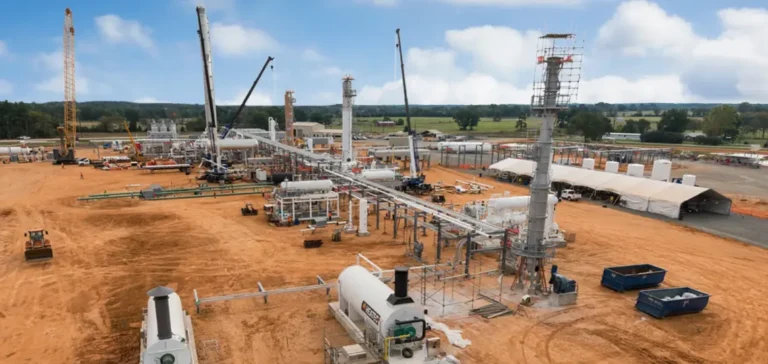Fluenta, a specialist in flare gas measurement, has deployed its Bias-90 FlarePhase solution at the Pelican Amine Treating Plant industrial site in DeSoto Parish, Louisiana. This installation represents the first commercial use of the Bias-90 FlarePhase configuration, designed to address the complexity of measuring carbon dioxide (CO₂) emissions exceeding 90%.
Technology dedicated to high CO₂ concentration gases
The Bias-90 FlarePhase system introduces a new approach by angling its transducer heads at 90 degrees, separated by a fixed distance. This architecture helps to reduce the impact of CO₂ on ultrasonic signals and ensures precise measurements in environments where CO₂ content exceeds 30%. Tests conducted at the Instituto de Pesquisas Tecnológicas (IPT) in Brazil validated the device’s performance, demonstrating its resilience and reliability under extreme CO₂ conditions.
This installation allows the collection of reliable data even in situations where conventional measurement solutions reach their limits. Industrial operators thus find a suitable response to growing requirements for emissions monitoring and regulatory compliance.
Operational optimisation and compliance
The Bias-90 FlarePhase system ensures that the Pelican Amine Treating Plant meets obligations set by environmental authorities, particularly regarding emissions reporting. Access to accurate data also supports the optimisation of industrial processes and helps reduce on-site losses.
Its robustness guarantees continuity of measurement operations, regardless of fluctuations in CO₂ concentration. Integrating this technology meets the growing demand for tools suited to emissions monitoring in industries facing increased reporting constraints.
Impacts on the carbon measurement sector
This first application of Bias-90 FlarePhase signals a shift in the field of industrial measurement, especially for sites exposed to very high CO₂ flows. The technology paves the way for new standards in flare gas monitoring and management in complex settings.
Julian Dudley-Smith, Managing Director of Fluenta, stated that this deployment represents progress for industrial operators. The project highlights the contribution of technical solutions that improve measurement reliability while allowing sites to adapt to current regulatory expectations.






















